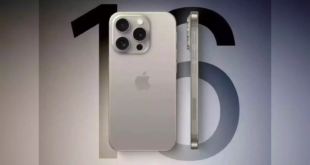by Michael Z
In the first few months of 2020, the number of COVID-19 cases has proliferated across the globe, causing hundreds of thousands of deaths, locking down billions of people, and affecting the normal living of almost everyone on the planet. There has never been such an influential health incident in modern human history and the impact would definitely be far-reaching. However, humans, known for their resilience and capability to change and adapt, are once again fighting back, with new technologies. A lot of technology innovations are being brought to the front line to fight and mitigate the impact of the COVID-19. This article is the first in a series to illustrate how powerful the technology tools are in fighting the virus.
Fast and widespread testing was one of the key components in fighting the virus. Scientists and engineers in health institutes and biotech companies rushed to develop the testing methods. There are two main types of tests: molecular and serological. In a patient with a COVID-19 infection, genetic material from the virus is detected in respiratory specimens, using a method called RT-PCR. Most RT-PCR tests will take days, but new rapid diagnostic tests for COVID-19 can deliver results in less than a couple of hours. In March, South Korea adopted testing that can return results in 30 minutes. Combining with the roadside test stations, it helped greatly in curbing the spreading of the virus in the country. In the United States, Abbott’s test kit can return results in as little as 5 minutes and it has been approved by the FDA (Source: Abbott).
Courtesy: Abbott
Serological tests are now being developed and can help give us a broader understanding of COVID-19 infection. Serological tests detect antibodies in a blood sample, usually obtained through a simple finger prick. Since it can take several days for the body to develop an antibody response to the virus, serological tests may not be useful in identifying an early-stage infection or help with prevention. However, the major advantage is that serological tests can identify those that were infected and have recovered, unlike molecular tests. This is particularly important when governments and health professionals decide who is at lower risk and when to lift the lockdown.
On the other hand, Tracking and tracing have been proven as an effective way of reducing risks of infection. In Korea and China, among others, governments are using mobile apps and cellular signals to track the locations of individuals and send out alerts if users are in close contact with the sources of infection. In the US Apple and Google joined forces to develop apps to track the location of users and use Bluetooth technologies to track the physical proximity between phones (Source: NPR). Users will receive a notification if they have been getting close to infected persons. Apple and Google chose perhaps the most privacy-friendly scheme that could mitigate the concerns of privacy violation. Whether it can overcome their doubters on privacy protection, will be important to the success of their coronavirus warning system.
Coutersey: Healthmap.org
– More coverages on robotics, remote working, and online shopping to be continued
 Tempus Magazine By Students, For Students
Tempus Magazine By Students, For Students 



